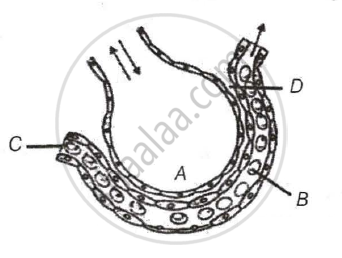Advertisements
Advertisements
Question
Explain the mechanism of breathing.
Solution
- The process of taking air into the lungs is called inspiration or inhalation.
- During inspiration, the sternum is pushed up and outward and the diaphragm is pulled down.
- This increases the volume of the thoracic cavity and the pressure decreases.
- The air outside the body flows into the lungs. Here exchange of gases takes place between the air and the blood.
- The process of expelling air from the lungs is called expiration or exhalation. Upon exhalation, the lungs recoil to force the air out of the lungs.
- The intercostal muscles relax, returning the chest wall to its original position. During exhalation, the diaphragm also relaxes, moving higher into the thoracic cavity.
- This increases the pressure within the thoracic cavity relative to the environment.
- Air rushes out of the lungs due to the pressure gradient. This movement of air out of the lungs is a passive event.
APPEARS IN
RELATED QUESTIONS
Why does an athlete breathe faster and deeper than usual after finishing the race?
Write true or false for the following statement. Rewrite the false statement correctly.
Respiration and breathing are two different processes.
Distinguish between inspiration and expiration.
During inspiration, the diaphragm ______.
Resistance in the airways is typically low. Why? Give two reasons.
For which of the following reasons stepwise cellular respiration is useful?
During inspiration, air passes into lungs due to
In alveolar air, the partial pressure of CO2 is ______.
The figure given below shows a small part of human lung where exchange of gas takes place. In which one of the options given below, the one part A, B, C or D is correctly identified along with its function.

Complete the table:
| Partial pressure of gases |
Alveolar air | Pulmonary Capillaries |
| PP02 104 | mm Hg | ______ |
| PPC02 40 | mm Hg | ______ |
